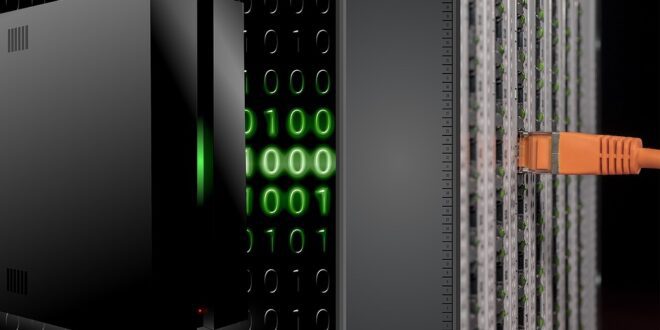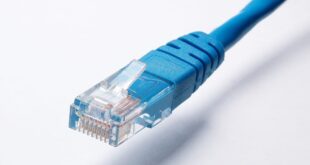Best 30 Tools for Network Security You Must Try
1. Firewall – Your Digital Guardian
Keep your network secure by setting up a firewall that efficiently blocks suspicious incoming and outgoing network traffic.
2. Antivirus Software – Safeguarding Your Systems
Utilize top-notch antivirus software to scan for and remove any malicious programs that may compromise your network.
3. Intrusion Detection System (IDS) – Staying Alert
Use an IDS to detect any unauthorized access or malicious activities taking place within your network.
4. Virtual Private Network (VPN) – Secure Remote Access
Ensure secure remote access to your network by implementing a VPN, encrypting data transmission and preventing unauthorized entry.
5. Network Monitoring Tools – Vigilant Eye
Keep an eye on your network’s overall performance and detect any anomalies with network monitoring tools tailored for your requirements.
6. vulnerability scanners – Identify Weaknesses
Scan your network to identify any vulnerabilities that hackers attempt to exploit, allowing you to address them proactively.
7. Web Application Firewall (WAF) – Protecting Web-Based Systems
Guard your web applications against various attacks, such as SQL injection or cross-site scripting, using a web application firewall.
8. Password Managers – Secure Your Logins
Utilize password managers to store and generate strong, unique passwords, ensuring the security of your network access.
9. Network Encryption Tools – Secrecy Guaranteed
Encrypt your network traffic using reliable encryption tools to protect sensitive information from potential eavesdroppers.
10. SIEM (Security Information and Event Management) – Intelligence at its Best
Combine security information and event management to gather and analyze various security logs and act upon any suspicious activities effectively.
11. Identity and Access Management (IAM) – Granting Secure Access
Ensure only authorized individuals can access your network resources by implementing a robust identity and access management system.
12. Email Security Tools – Shield Against Threats
Protect your network from email spoofing, phishing attacks, and malware-infected attachments with email security tools.
13. Network Segmentation – Isolating Critical Assets
Implement network segmentation to restrict unauthorized access and create secure zones for critical assets in your network.
14. Router Security Tools – Safeguarding Entry Points
Secure your router to prevent unauthorized access and protect against potential threats.
15. Data Loss Prevention Systems (DLP) – Keeping Data Intact
Prevent data leaks or breaches by implementing DLP systems that monitor and control data handling within your network.
16. Wireless Network Security Tools – Safety Without Wires
Ensure the security of your wireless network by implementing encryption methods, such as WPA3, and strong passwords.
17. Penetration Testing Tools – Testing Network Fortifications
Simulate real-world attack scenarios to identify potential vulnerabilities that could be exploited by hackers.
18. Two-Factor Authentication (2FA) – Double Layered Security
Enhance network security by implementing 2FA, requiring users to provide additional verification alongside their passwords.
19. Network Traffic Analysis Tools – Identifying Patterns
Analyze your network’s traffic to detect any abnormalities or potential breaches, ensuring quick response and mitigation.
20. Endpoint Protection Software – Securing Device Endpoints
Protect individual devices within your network by implementing endpoint protection software to defend against malware and unauthorized access.
21. Cryptography Tools – Confidential Communications
Employ advanced encryption algorithms from cryptography tools to secure communication channels and protect data integrity.
22. Browser Security Plug-ins – Safe Online Browsing
Utilize browser security plug-ins to block malicious websites, prevent tracking, and provide safer browsing experiences.
23. Incident Response Tools – Rapid Reactions
Plan ahead for potential security incidents and have knowledge of incident response tools to minimize damage and recover quickly.
24. File Integrity Monitoring (FIM) – Maintaining Data Consistency
Monitor your critical files for unauthorized modifications or tampering, ensuring the integrity and trustworthiness of your data.
25. Patch Management Systems – Staying Up to Date
Keep your systems and applications secure by promptly applying the latest patches released by vendors.
26. Network Behavioral Analytics Tools – Detecting Anomalies
Analyze network and user behavior to identify any deviations from normal patterns, effectively detecting potential threats.
27. Network Access Control (NAC) – Authorized Connections Only
Implement NAC systems to restrict network access, granting entry only to authorized devices and users.
28. Backup and Recovery Solutions – Preparing for the Worst
Create regular backups of your network’s data to ensure quick recovery in the event of security breaches or data loss.
29. Social Engineering Prevention Training – Awareness is Key
Educate your employees about social engineering techniques and provide training to help them recognize and prevent such attacks.
30. Security Information Sharing Platforms – Collaborative Defense
Participate in security information sharing platforms to stay updated on the latest threats and share knowledge with experts in the field.
 Mind Uncharted Explore. Discover. Learn.
Mind Uncharted Explore. Discover. Learn.




